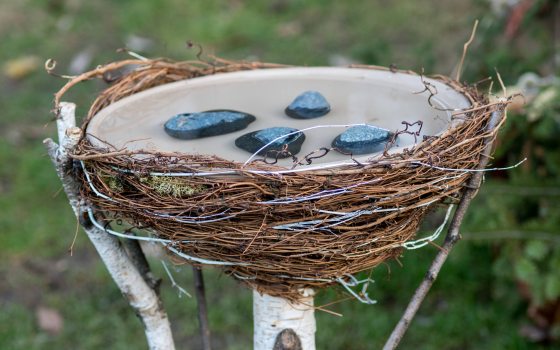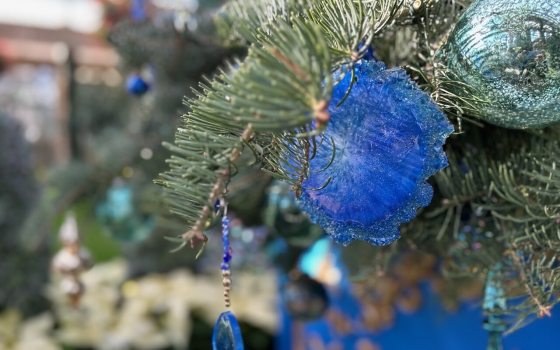What does it take to be an ecological gardener, beyond filling landscapes with a diverse selection of native plants? Plants are obviously a vital component of any garden. As primary producers, plants form the base of the garden food web that supports animal life. While the vast majority of our native fauna depend on plants directly or indirectly for their survival, many animals also have specific environmental needs that must also be met, as the physical environment of the garden provides shade, shelter, and living space for its residents.
An ecologically-minded gardener can create or improve wildlife habitat by doing much more than planting more plants. Keep reading to learn what you can do in your garden to make it a more friendly and sustainable environment for the animals that call it home.
Don’t Stress the Mess
One of the first and foremost ecological gardening principles is that a “mess” can be good! Logs, sticks, leaves, stems, and other organic debris are natural parts of the garden ecosystem, and can be used by wildlife in many different ways. Keep in mind that the “more is better” idea does not always hold true, as most plants do not like being smothered by organic debris and most animal “pests” (like mice and voles) are preferentially attracted to cluttered landscapes that can shelter them from predators. By striking a balance between the inherent messiness of nature and the desire to impose order on the garden, an ecologically-minded gardener can save time and money by creating wildlife habitat through benign neglect.
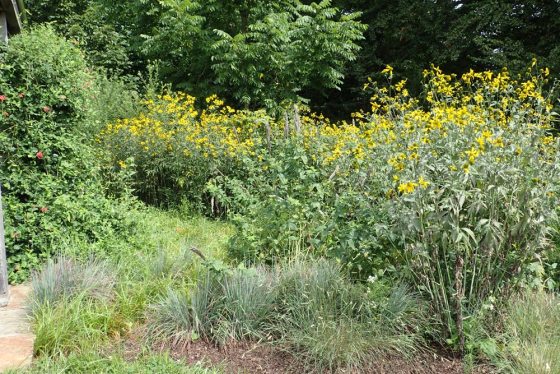
A “messy” natural garden can be structurally diverse and beautiful at the same time. Photo by Colin McCallum-Cook.
As one example, instead of trying to eliminate violets and other broadleaf-plants from your lawn, think of the pollen and nectar value that they are providing to pollinators. Those bare patches where the grass won’t grow? They may be serving as important nesting sites for ground-nesting bees.
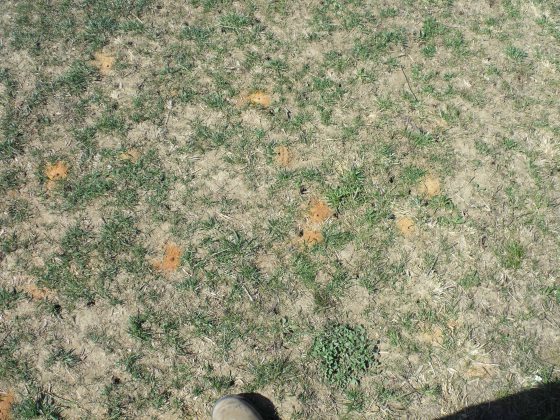
Ground nesting bees love areas of thin or patchy grass. Photo by Colin McCallum-Cook.
That stubborn mud puddle out back may even be an important source of nutrients for puddling butterflies, and those fallen leaves may be hiding the cocoon of a beautiful luna moth. Instead of thinking of mess as disorder, think of it instead as complexity. Structurally complex landscapes support a more diverse array of wildlife than simple ones, because different animals have different habitat requirements. The more species-diverse a landscape is, the more resilient it will be to change. While these ecological principles have long been recognized in the management of large, natural areas such as parks and preserves, they are still very much applicable in the garden.
Be a Rock Star
While organic debris can provide a good deal of structure and habitat in the garden, it is also helpful to include more solid, durable materials. Rocks and boulders can not only be used to create aesthetically pleasing, natural accents in the garden, but also fulfill important environmental functions.

Rocks can be used in very creative, artistic, and ecologically mindful ways in almost any garden. Photo by Carol DeGuiseppi.
Many small animals such as insects, snakes, or salamanders will take refuge under rocks to protect them from predators or desiccation. Other animals, particularly reptiles, will use rocks as basking areas to regulate their body temperature on cold days. While many people are justifiably wary of snakes, the vast majority of our native species are virtually harmless to people, and play an important role in keeping rodent populations in check. If you are having problems with voles, moles, or mice in your garden, consider adding strategically placed rock piles to make it more attractive to snakes and other reptiles.
Down to Earth
Soil is a vitally important but often overlooked environmental resource. While most gardeners have a keen appreciation for the importance of good healthy soil in a garden, it is easy to forget just how easy it is to lose soil. Soil formation is a slow process, and it is always a good idea to try to minimize erosion and soil loss wherever possible. Erosion can not only weaken the physical support and nutrient availability for your plants, but it can pollute local streams and waterways through siltation. In erosion-prone areas, buried logs or rocks can help to slow down storm runoff, and allow more time for suspended soil particles to settle out.
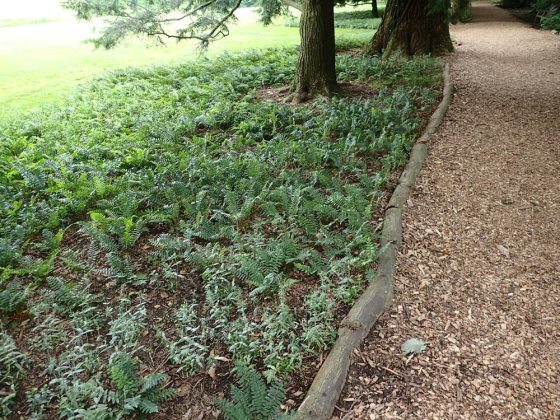
Buried logs can be used as a cheap and natural form of garden delineation and erosion control. Photo by Colin McCallum-Cook.
While swales and rain gardens can be used to catch and absorb limited amounts of storm water, it is important to remember that most erosion control efforts should seek to slow down or divert runoff rather than stop it entirely. All of these features add additional structure and wildlife habitat to your garden, and often can be incorporated into creative planting designs. Hugelkultur—a form of composting and gardening that seeks to mimic the natural decomposition and soil formation processes found in forests—is a good example of this.
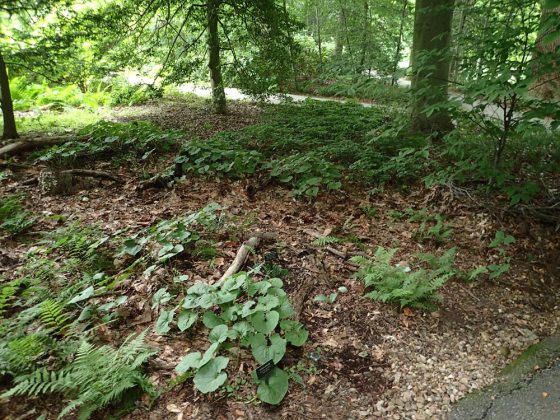
Hugelkultur mounds in Peirce’s woods provide cover for native plants and wildlife while stabilizing and improving soil. Photo by Colin McCallum-Cook.
Essentially, hugelkultur involves the creation of organic “mounds” comprised of wood, sticks, and earth designed to stabilize soil and improve its fertility and water retention gradually over time as these organic materials decay. Woodland plants such as ferns, wildflowers, or even trees can be planted into these mounds and can benefit from the structural complexity and environmental conditions that they provide.
Wood is Good
Hollow stems and twigs are important nesting habitat for native bees and other cavity-nesting insects. As such, it is good to leave as many of them in the garden—or the general vicinity—as possible. This does not mean, however, that you can’t take them down or move them—only that they should not be removed or destroyed.
If your garden borders a natural area, such as a forest or field, simply relocating last year’s stems a short distance away is a good compromise. Similarly, cutting the stems down and letting them lie flat in the garden will improve appearance and provide ample nesting space for native bees. Remember, dead stalks do eventually get knocked over, so this is not “unnatural.”

A mason bee (Osmia lignaria) investigates a hollow stem in the Meadow Garden for a potential nest site. Photo by Colin McCallum-Cook.
Many people find logs, stumps, and other dead wood to be very attractive, natural garden features. In fact, stump-gardens or “stumperies” were very popular in Victorian England, and have been enjoying somewhat of a renaissance today. Not only can dead wood provide an interesting natural form to a garden, but it can also provide important ecological functions.
Dead wood is an extremely important food resource for wood-eating detritivores—such as beetles, ants, and other insects—that in turn feed a variety of wildlife. Woodpeckers and other insect-eating birds will feed on these decomposers, while other animals such as chipmunks and salamanders will use dead wood as shelter.
The next time a tree dies in the garden, instead of removing it entirely, consider leaving the trunk or stump standing for wildlife habitat, seating, or wood carving. It is also possible to hollow out dead stumps and use them as planters for ferns and other woodland plants.
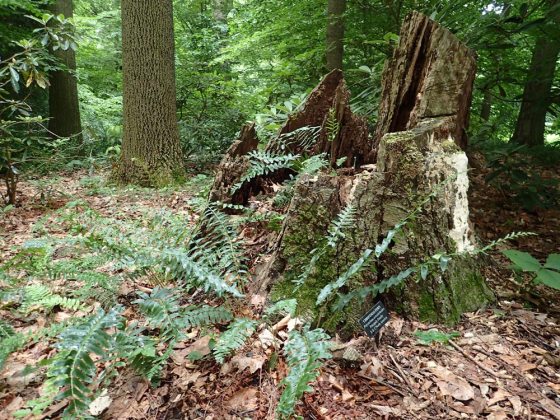
Stumps and large logs can be used to create natural planters for woodland plants. Photo by Colin McCallum-Cook.
Water Features and Creatures
Water is not only appreciated in the garden by plants and people—it is also appreciated by wildlife. Most birds, mammals, and insects need to drink just like we do, and adding natural water features to the garden may serve to attract animal species to your garden that might otherwise avoid it. Frogs, toads, and other amphibians benefit particularly well from water features, as do birds that rely on water for bathing.

Bird baths and other water features can also be made using natural materials. Photo by Hank Davis.
In urban or developed areas that may be devoid of wetlands, bird baths and other features can attract considerable numbers of birds to the garden as long as they are properly designed and maintained. Stagnant water can serve as an easy breeding ground for mosquitoes and other insects (though this too is a bonus from the bird’s perspective), but can also become fouled with toxic algae, bacteria, or other organisms that may be harmful to wildlife. It is also important that any water features designed for the benefit of wildlife not become predatory “traps” (unless you are trying to help local predators). Surround water features with low vegetation that provides good visibility while offering easy escape routes.
The ecologically-minded gardener should think of herself not as a ruler, but as a referee charged with balancing the needs of the garden with the needs of the animals that live there and the people that enjoy it. Dead-heading spent blooms, for example, will improve the visual appeal of the garden—and sometimes prolong blooming—but will also deprive seed-eating birds of a valuable food source. Similarly, removing fallen leaves may help some of your plants emerge earlier in spring, but may expose others to injurious frosts, and remove a valuable source of food and shelter for beneficial insects.
It is often difficult, if not impossible, to predict all of the unexpected consequences that may come from a specific management practice. As a result, it is best to follow the precautionary principle of trying to mimic nature wherever possible, and to justify action instead of inaction. When faced with a management decision, such as leaf removal, weeding, or chemical application, try to make a mental argument of why you should do these things rather than why you shouldn’t. And if the choices you make end up failing or backfiring, there is no shame in trying something different. By practicing “adaptive management,” an ecologically-minded gardener can mimic nature by learning from her mistakes instead of repeating them.
